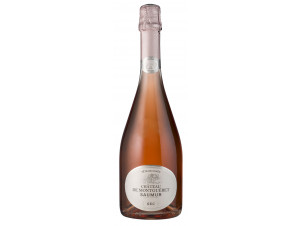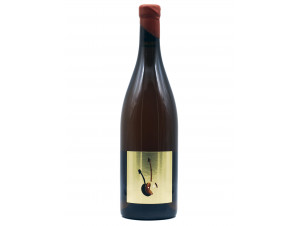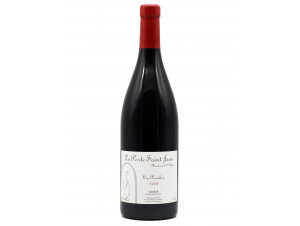You have no items in your shopping cart.
Wine Saumur
The Saumurois vineyard extends from Gennes to Montsoreau and from Saumur to Montreuil-Bellay, south of the banks of the Loire. It constitutes the eastern part of the Anjou vineyard. The Saumurois is distinguished by the diversity of its wines, with a range of 7 AOCs, of all different colours and types, of all colours, still or sparkling. Read more on Saumur
-
Top Selling
-
Top Selling-11%
-
Top Selling
- -10%
- -31%
- -25%
- -17%
- -17%
- -17%
- -17%
- -17%
Appellation Saumur
Saumur is a tuff territory
The wines of the Saumur AOC are spread over 28 communes in Maine-et-Loire, 9 in Vienne and 2 in Deux-Sèvres. The bright white tuffeau stone marks the entire terroir. Its particularly porous texture has allowed the construction of hundreds of kilometres of underground galleries, dug into the tuff, suitable for maturing the wine. The climate is oceanic and temperate.
The Saumur vineyard emerged victorious from successive ravages
The first traces that testify to the existence of the Saumur vineyard date back to the 4th century, when the cultivation of vines was developing in the region, thanks to Saint Martin and his disciples. Saint Martin of Tours, or Martin the Merciful, or Saint Martin of the Fields, was born in 316, in the Roman Empire, where Hungary is today. He became one of the major saints of Christianity and the most famous of the bishops of Tours, along with Gregory of Tours.
In the 10th century, monasteries flourished in the region and their monks worked to further develop the cultivation of vines. In 1066, the monks of Saint-Florent cleared the Bois Doré which covers the hillside from Saumur to Montsoreau. Then, the Templars in Aunis and the Cordeliers in Champigny extended the vineyards around Saumur.
The vineyard enjoyed an exceptional location, close to the communication routes which allowed the wine to be exported and made Saumur one of the most prosperous and renowned markets on the banks of the Loire. During the Hundred Years' War, the vineyards of Saumur were spared, thanks to the protection of the Counts of Anjou. The peak of the region's wine trade occurred between 1460 and 1470, when King René reigned.
The revocation of the Edict of Nantes in 1685, however, led to the decline of the town, and with it the decline of the wine trade. Saumur had in fact become the Protestant capital at the end of the 16th century, thanks to Duplessis-Mornay who founded the most important Protestant Theological Academy in France in 1599. After the revocation, within a century, the population fell from 21,000 to less than 10,000 and a large number of S saumurois winegrowers went bankrupt.
The next two centuries were a succession of victories and defeats for the vine. While the vineyards were finally reconstituted, it was the French Revolution and the Vendée wars that devastated the region. As the region recovered, a devastating fungus from America, phylloxera, ruthlessly attacked the vines. By the end of the 19th century, there was almost nothing left of the Saumur vineyards.
However, the winegrowers being aware of exploiting an exceptional land, they put in the double effort and, in a quarter of a century, the vineyard was reconstituted more qualitative and productive than ever, ready to be listed among the greatest.
The Saumur vineyard counts 7 AOCs for 4,000 hectares of vines
Saumur alone represents 7 AOCs and a production of 300,000 hectolitres for 28 million bottles.
The red Saumur, the original since 1936
The Red Saumur is a Cabernet Franc that offers a luminous, ruby-coloured robe. Its nose is all finesse and lightness, developing aromas of red fruits and flowers, such as iris and violet. Its mouthfeel is rather supple, sometimes very dense, with fine and velvety tannins. Serve it at 16 to 18°C.The white Saumur since 1936
Spring or ageing, this fresh, smooth or delicate wine is best served at 10°C. This Chenin grape variety offers a deep golden yellow colour. The white Saumur is impregnated by the tuffeau which gives it finesse and lightness, but also a characteristic mineral note, reminiscent of tuffeau. Its aromas of stewed white fruit mingle with those of flowers, also white. Its attack in the mouth is rather supple, sometimes dense, with a fresh and balanced finish. The white can be consumed within five years, but fleshes out with age, up to fifteen years.The Saumur Fines Bulles since 1957
Fines Bulles de Loire is bright, charming and sparkling. It is a Chenin grape variety, the majority for the Saumur Fines Bulles white, and a cabernet sauvignon, the majority for the Saumur Fines Bulles rosé. Saumur Fines Bulles is drunk in flutes, between 6 and 8°C. Its colour is crystalline, clear with grey to straw yellow reflections and golden hues. For the rosé, it is salmon-coloured, sometimes with a hint of cherry. Its nose is a delicious mixture of white fruits, lemon balm, hazelnut, almond and sometimes a touch of vanilla or toast. The rosé is distinguished by its aromas of small red fruits. On the palate, the fine bubbles are fresh and invigorating for the bruts, softer for the demi-sec and slightly tannic for the rosés.Saumur Champigny since 1957
The Saumur Champigny is arguably the most famous of the Saumur wines. This Cabernet Franc is supple, frank and spirited. While most Champigny wines can be drunk young, you'll enjoy their complexity which reveals itself after several years of cellaring, ranging from 5 to 20 years. The colour is bright, an exemplary garnet red. Its nose is complex with spicy aromas. The tuffeau brings finesse and lightness, with notes of red fruits and flowers, such as iris and violet. On the palate, it is rich and full-bodied. You will appreciate its fine and velvety tannins and a fresh and balanced finish. Serve it between 16 and 18°C.The Coteaux de Saumur since 1962
A wine for aging par excellence, this Chenin grape variety is rich and exotic. Coteaux de Saumur is a sweet wine, with an intense colour, golden yellow with green reflections, evolving on old gold with amber reflections. Its fresh nose is nevertheless complex and original. Scents of rhubarb, peach and apricot mingle with notes of white flowers. Its mouth is both lively and unctuous. It is recommended to serve it chilled, between 6 and 8°C.Saumur rosé since 1964
The Cabernet Franc used for the rosé is dry, tender and fruity. Its colour is luminous and crystalline, salmon pink with partridge eye nuances. Its nose of great freshness is distinguished by notes of small red fruits - strawberries and currants - rose and peach. Its greedy freshness offers a roundness to the red fruit notes. 8°C is enough for it and you can drink it in its first years.The Saumur Puy-Notre-Dame, the latest born in 2008
Characteristic, powerful and refined, the Saumur Puy Notre Dame is the latest to benefit from an AOC. This Cabernet Franc can be drunk young, but you can prefer it as a wine to keep, from 5 to 10 years, to reveal its complexity. With a deep colour, it is always full-bodied, powerful and harmonious. Dominated by aromas of red and black fruits, it offers a beautiful persistence in mouth.
Vallée de la Loire appellations




































 TWIL - Achat de Vin
TWIL - Achat de Vin


